[Home Theater Network HDAV.com.cn] Before the dazzling introduction to the various speakers Mike mixer effects article we have seen a lot, various forums, abound.
In fact, it cannot be denied that professional audio accessories and accessories are also very important, and some even play a decisive role. For example, we have a set of usable audio equipment, in addition to the equipment itself, we need a variety of connecting wires, connectors, etc. to connect the equipment to be able to use. A complete wire consists of a plug and a wire, and the wire has a wide variety of types: microphone cable, signal cable, speaker cable, MIDI cable, coaxial cable, fiber cable, audio cable, and so on. Additional accessories include speaker stand, microphone stand, equipment box, protection box, flight case, patch panel, cabinet, power supply, DI box, audio isolation transformer, VU meter, timing power supply, and more.
Here is a brief introduction to commonly used accessories:
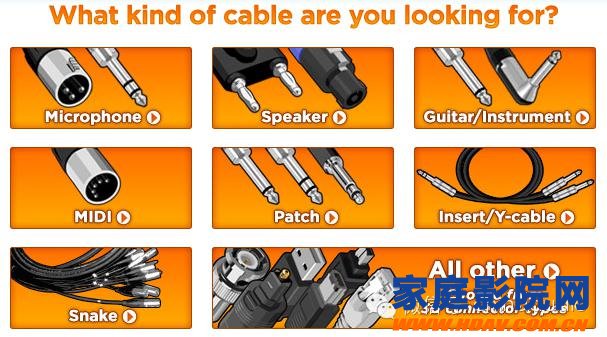
Common audio/video plug
In an audio and video project, the output and input signal types of the device can be divided into audio signals and video signals (this time is only a brief introduction);
Audio signals can be roughly divided into balanced signals and unbalanced signals depending on the impedance (the source devices such as DVD players/cassettes/CD players and outputs are mostly unbalanced signals). Therefore, the connection plug is also balanced and unbalanced, the balance plug has a three-core structure, and the unbalanced plug has a two-core structure. There is also a special plug for connecting the amplifier to the speaker in the audio plug. This plug is usually a four-core structure (also has two cores and eight cores). Because it is invented by the Swiss company NEUTRIK, it is also called NEUTRIK. (New York) plug or "four core (two core, eight core) speaker plug".
1. Commonly used balanced signal plug
Card 侬 plug (XLR): The card 侬 head is divided into XLR Male and XLR Female. The identification of the male and female heads of the card is very simple. The "female" is the "female" and the "female" is the "female". The input and output ports of many audio equipments are card interface, the same interface with "pin" is "male", and the interface with "hole" is "female".

Big three-pin plug or 6.3mm three-pin plug (PhoneJackBalance)
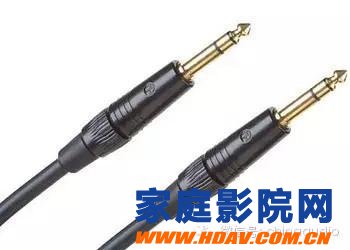
2. Common unbalanced signal plugs
Big two core plug (PhoneJack Unbalance)

Lotus plug (RCA)

Small three-pin plug or 3.5mm three-pin plug: the appearance is similar to the big three-pin plug, but the volume is smaller than the big three core. The small three-pin plug is a three-core plug. The three cores are balanced signal plugs. However, in the normal audio engineering, the small three-pin plug is mostly used for audio signal output of computers and portable audio sources (portable CD/MP3, etc.), so the small three cores will be used. The plug is included in the unbalanced signal plug. (Pork grille supplement: the previous "three cores" so-called "balance" is that it uses three cores to transmit mono, on the mobile device such as headphones / iPod, "three cores" is used to transmit stereo, actually two "Two cores" added together, shielded line sharing only

3. Neutrik speaker plug (Speakon)
Neutrik plugs are commonly used in four-core, two-core, eight-core speaker plugs, they look basically the same, only the size difference. Usually, the interface of the speaker is a four-pin plug. For example, the rear of the eight-pin plug speaker will be marked; the output port of the amplifier is a four-pin plug.
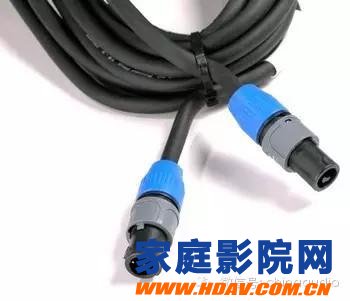
4. Common video connection plug
Lotus plug (RCA) BNC or Q9 plug
The lotus plug is mainly used for output and input of analog video signals in the video system, such as DVD video (image) output/small projector video (image) input; BNC or Q9 plug is mainly used for analog video output and input. For example, the input and output of a part of the video matrix/the video input of a large projector (component video) / the video input of a professional monitor. The role of the lotus plug and the BNC plug in the video system is the same except for the interface form.
A VGA plug for computer video signals is also used in the video connection plug. The shape of the interface is trapezoidal 15 needles, which are divided into male and female plugs, the male head is with a needle, and the wood is perforated. Please refer to the host computer and monitor cable plug for physical objects.

Audio cable
The audio cable is used to connect the source device to the power amplifier.
The sound quality of the sound line on the market is mainly gold-plated, silver, and elemental oxygen. The non-metallic carbon has a higher import volume, but its price is more expensive. Generally, it costs a few hundred yuan. Mainly American MONSTER STANDRDINTERLINK, AUDIO0UEST, SUPRA, M0NITERPC, SPACE&TIME, MISSION, PATRDNICS, VDH (Netherlands-Vanden Howe )and many more.
For the general popular type (below 10,000 yuan) audio equipment, there is no need to deliberately pursue the high quality of the wire, as long as the copper core signal line with a larger cross section is used.
For better home theater audio equipment, you can consider using high-quality audio cables, such as fiber optic output and input interfaces on DVD video players and "AC-3" decoders, such as optical fiber transmission lines, which can improve the sound quality. Get a more obvious effect.
No impedance matching wire can be heard. What is impedance matching? When the impedance of the wire is within 5% of the impedance of the system, it can be considered as impedance matching.
The environment where the audio cable is located generally has an impedance of 125 ohms, such as a sound card. The environment in which the coaxial cable is used generally has an impedance of 75 ohms. The environment in which the speaker cable is located is generally 4 ohms or 8 ohms. That is to say, the smaller the environmental impedance is, the higher the wire requirements and the more obvious the difference between the wires.
Therefore, there are the following conclusions (relative, not absolute, please note):
In general, speaker cable contrast, if you do not pay attention to impedance matching, is the most obvious type of wire, which is the most useful type of wire you understand.
Next is the coaxial line, and again the audio line. In general, the coaxial line can replace the audio line. The audio line is preferably not a substitute for the coaxial line (that is, the audio line is used instead of the coaxial line, and there is sound).
Finally, consider the power cord separately. Depending on the environment, it may be more sensitive than the speaker cable, or it may be the least sensitive cable.
Because the power line, the main consideration is to use the power of the device, the device with the higher power is more sensitive to the power line. In some cases, the more the difference can be heard, the less sensitive it is to some pre-stage low-power devices. The difficulty of hearing the difference is relatively large.
Audio cable: A set of audio cables is often two, divided into two channels, the ends of which are lotus heads (RCA heads).
Coaxial: used to transmit multi-channel signals (Dolby AC-3 or DTS signals), similar to audio lines, because of the large amount of signals, connectors and lines are thicker than ordinary audio lines, generally used to connect DVD players with Amplifier.
Fiber optic cable: Also used to transmit multi-channel signals (Dolby AC-3 or DTS signals) for connecting DVD players to amplifiers.
Microphone cable: A two-core coaxial cable for connecting a power amplifier to a microphone. At present, the rise of wireless microphones, if not for special considerations, can be ignored when wiring, and wireless microphone applications will certainly become wider and wider.
The audio cable is basically not needed when wiring, because the audio source device and the power amplifier are often put together, these lines are very short, and the configuration can be done later.
Various interfaces
A, USB interface:
The other end of the microphone cable can be directly connected to the USB interface of the computer! It can be hot-swapped, easy to carry, standard and can be connected to multiple devices.
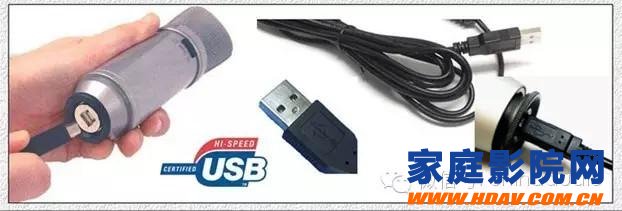
B, Canon interface:
(The wire has three needles, and the metal needle is used to confirm the "public" and "mother". The end with the metal needle is called the "public" Canon head, otherwise it is called the "female" Canon head! The "public" and "female" pairing match In general, the microphone connection end, if the microphone's own interface is Canon, then the microphone tail interface must be "public" Canon! The connector at the end of the line connected to the microphone should be the "female" Canon connector!
C, lotus joint (3.5MM):
Lotus RCA is not designed for which interface, it can be used in audio, but also in ordinary video signals, but also DVD component (YCrCb) socket, but the number is three.
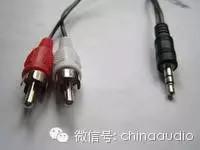
D, 6.5MM interface (divided into two types: big two core, big three core, the standard of judgment is the middle sound line!)
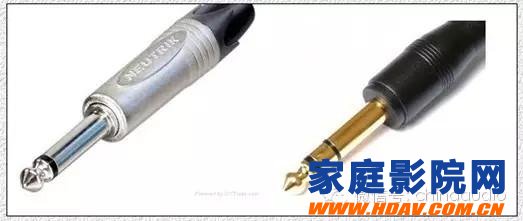
Flight box
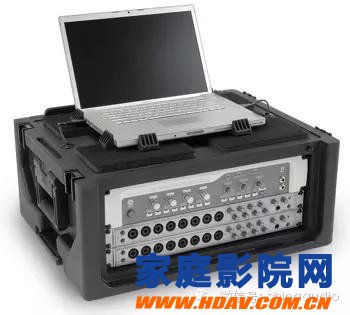
Presumably everyone should have heard of the Pelican flight case. There is not much to introduce here. Today I mainly introduce the SKB flight air box. SKB is a high quality equipment protection box from the United States. Its material is high molecular polyethylene (PE), which is a kind of material with high quality, high pressure, anti-drop and fireproof. Flame-retardant polymer polyethylene sheet is widely used in China's electric power, coal, steel, cement, coking and other industries to effectively prevent fire caused by coal spontaneous combustion and other factors. The plate is based on the ultra-high molecular weight polyethylene raw materials, according to the customer's needs to add relevant modified materials, through mixing-calendering-sintering-cooling--high-pressure setting--release-forming.
SKB's equipment box has won wide recognition from industry colleagues for its rugged features. Rebar rack, rear frame, drop and water proof, with inner pad door, automatic pressure relief valve, front and rear 4 rollers, built-in latch, adjustable rubber shock absorber, and rotational molding The unparalleled charm of SKB.
Jumper

The jumper allows flexible and convenient interconnection of the internal circuit structure of the mixer, such as: Multti Tr OUT/IN part, Dyn part, EQ part, Seng part, etc. It can also be used in the internal circuit of the mixer. Temporary non-standard changes to the structure.
For example, the DV series of high-definition video patch panels are the new video patch panels developed by Caramel for high-definition digital (HD-SDI) after the highly successful video patch panels DVJ-W and DVJ-S. Not only for high-definition digital signals, but also for standard definition digital (SD-SDI), analog video, and digital audio signals.
The most common use of the patch panel in the auditorium of the theater theater is to control the input and output of the system backup and signal.
Commonly used methods are: (in the auditorium and stage area) all stage signals can provide a complete signal input and output interface in the middle or rear of the auditorium, on both sides of the stage, but under normal circumstances, the signal is directly bypassed to the back. Control the room and plug the console into those controls as needed. Remember that these control bits are both signal input and output.
The use of the control room is even more abundant, in short, the input and output of all devices can be entered into the jumper. That is to say, all the sound sources, the bus output of the mixer, the matrix output, the AUX, the INSERT, the input and output of the audio matrix, and the input of the power amplifier can all be found on the jumper. At the same time, it should be considered that any level can be taken off and backed up by other devices, and then replaced by a system backup.
The welding method can be used to weld thick slabs and post-weld sheets, or vice versa. It depends on how you use it.
Other functions of the patch panel: the signal matrix allocation function, just like the manual telephone line used in the past, it is relatively simple to say nothing. Just connect the input and output you need to the upper and lower rows, and then jump in front. This type of jumper is connected to each other before and after, and is also very cheap.
Audio isolation transformer, multi-channel passive VU meter
An audio transformer is a transformer that operates in the audio range, also known as a low frequency transformer. The operating frequency range is generally from 10 to 20,000 Hz. It is mainly used for audio signal transmission between systems or between devices. It can completely isolate the potential difference between two systems, avoid the audible interference caused by the grounding problem, prevent the excessive potential difference from damaging the input stage of the device, and realize the audio signal. Secure transmission is a must-have for audio system cascading.
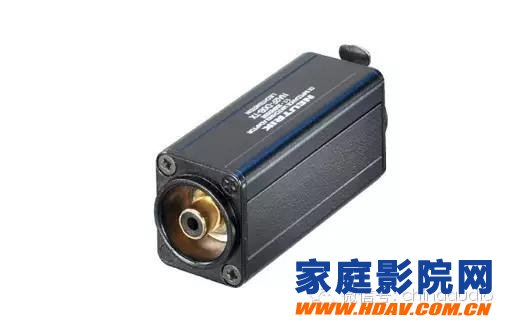
Take Neutrik as an example
· Audio transformer 1:1 impedance ratio 200:200
· Low cost solution for unbalanced/balanced line conversion and passive DI applications without grounding or gain switching
· Source / load impedance 600/10K Maximum input level 50Hz total harmonic distortion: -3dBu
Vu meter, a US-standardized volume meter or any other meter with similar characteristics.

Take the VU8-multi-channel passive VU meter.
The VU8 is a multi-track passive VU meter and headphone monitoring system for multi-purpose audio level indicators.
Whether used in radio, studio, live sound reinforcement or other audio production environments, the VU8 offers a simple, multi-channel visual table bridge. The device bridge is a complete passive device with a choice of peak or average. This not only ensures that the signal is purely immune to any other signals, but also ensures the precision of the audio signal displayed on the meter. Optional portable headphone monitor output for monitoring 8 channels anytime, anywhere. The VU8 professional design is ideal for a wide range of audio applications.
Please note: The standard setting of the meter is -10dB. It can be set internally to +4dB.
Timing power supply, DI box
The power sequencer can start the power supply one by one according to the order from the pre-stage equipment to the post-stage equipment. When the power supply is turned off, the various types of electric equipment are shut down from the subsequent stage to the pre-stage, so that the various management and control can be effectively unified. The electrical equipment avoids the human error operation, and at the same time reduces the impact of the electrical equipment on the power supply grid at the moment of switching, and also avoids the impact of the induced current on the equipment, ensuring the stability of the entire power system.
The timing device for controlling the on/off of the electric equipment is one of the indispensable devices for various sound engineering, television broadcasting systems, computer network systems and other electrical engineering.
Generally, the front panel is provided with a total power switch and two sets of indicators, one is the system power indication, and the other is the status indication of the eight-way power supply interface, which is convenient for use in the field. The backplane is equipped with eight sets of AC power outlets controlled by switches. Each group of power supplies automatically delays for 1.5 seconds to protect the controlled equipment and ensure stable operation of the entire system. Each independent packet outlet allows maximum current. It is 30A.

For example: Mclelland Maryland GNL-3200E professional 10-channel sequential power supply
The Mclelland Maryland GNL-3200E professional 10-channel timing power supply has three sets of delay outputs, which are characterized by the use of multi-stage filters to prevent RF interference. The GNL series provides you with a stable and clean power supply and an effective system protection.
DI box
The Direct Injection box, referred to as the DI box, achieves impedance matching when the electric guitar is plugged into the mixer's MIC balanced input. It is often used in professional recordings. Now more people use the DI box and the speaker simulator or the effects with the speaker simulation function.

Because the sound of the speaker during the performance is very different from the sound of the speaker used for the tuning during the rehearsal, the sound of the performance will change unexpectedly, and the microphone is placed without a special professional tuner and there is not enough debugging time. It is difficult to adjust to a reasonable position. In addition, the performance difference of the microphone has a great influence on the tone. So using a good speaker simulator can solve the above problem, it is equal to the guitar speaker that you wear, and you don't need the microphone to pick up the sound, where the sound is the same, but the professional performance only gives the guitarist a pickup microphone. The line, so this time you need a DI box, pull the microphone line and plug it into the DI box. At the same time, the hand box can be used for monitoring. For more fresh and fun home theater information, please pay attention to the home theater network (WeChat: cnhifi) http://, the country's most influential home theater audio player interactive media website.
Lithium Storage Battery,Lithium Ion Battery,Lithium Battery,Electric Car Lithium Battery
Henan Xintaihang Power Source Co.,Ltd , https://www.taihangbattery.com